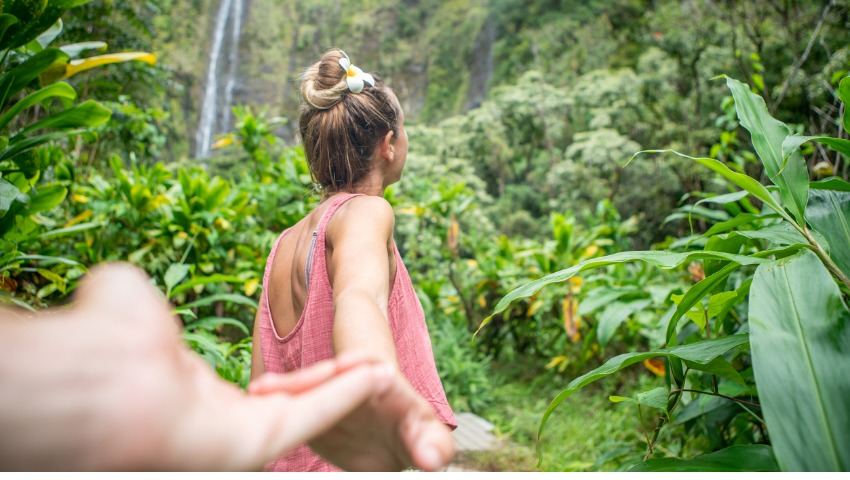Hawaii wants your group to visit, but not your invasive species. Nonnative plants and animals can wreak havoc in the fragile ecosystem of the world’s most isolated archipelago, and a great way your group can give back is to help root them out. Here are ways to do just that on the biggest of the islands, Island of Hawaii.
Himalayan Ginger
Non-native plants such as Himalayan ginger may seem harmless, but in reality the plant is among the world’s most invasive species, dominating landscapes and disrupting the growth and nurturing of native plants. Originally found in moist tropical forests in the eastern Himalayas, Himalayan ginger has naturalized in other areas of the globe, including the Hawaiian Islands. Visitors can help protect native species and their habitats on the Island of Hawaii by volunteering with Hawaii Volcanoes National Park’s Stewardship at the Summit program.
Volunteers can help park staff clear Himalayan ginger and other invasive plants near the summit of Kilauea volcano. These include the faya tree, Australian tree fern and strawberry gauva tree. This allows allow native plants such as ohia and olapa trees, amau ferns, hapuu tree ferns, painiu and kawau to flourish.
Sandalwood Trees
To re-establish native sandalwood trees on its lands, Puakea Ranch in impossibly scenic Hawi recently enhanced its sustainable and regenerative practices via a partnership with the nonprofit Hawaiian Reforestation Program (HRP) and its founder, Mark Hanson. Puakea Ranch will make a cash donation to HRP for every visitor to its property to directly fund seedlings and the germination of trees. Guests can also volunteer with HRP on tree planting days, a great way to explore island landscapes while making a difference. Additionally, Puakea Ranch is collecting seeds and seedlings, which guests are invited to help plant on the property.
Cultural Tour
Many native plants in Hawaii have ancient cultural significance. At Fairmont Orchid, a AAA Four Diamond luxury resort on the Kohala Coast, a new cultural tour will be offered in 2020 by Kaiulani Blankenfeld, the resort’s director of Hawaiian culture. Na Mea Waiwai O Milokukahi is a walking exploration of the property, visiting its fishponds, tidepools, honu (Hawaiian sea turtles), petroglyphs and beehives. The tour is designed to encourage participants to be good stewards of the aina (land), and honors Hawaiian history, stories and culture. The hour-long tour is open daily to guests of Fairmont Orchid. It culminates at Ahu a Kupuna, a traditional altar honoring Hawaiian ancestors.




